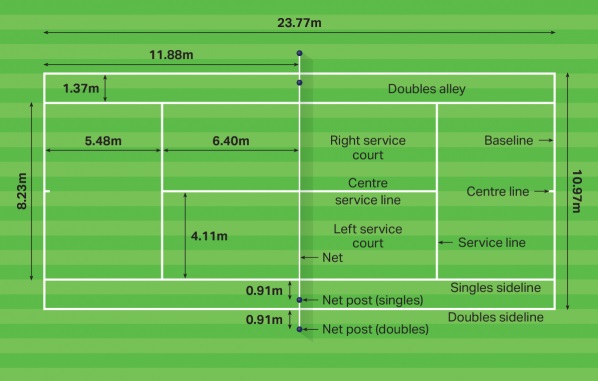TOP 10 FASHION DESIGNERS IN INDIA
1.) MANISH MALHOTRA

The famous Indian designer started his career as a model. When he failed as a model, he streamlined himself into designing clothes, art and fashion. He started his fashion career in Bollywood films and his designs were influential in bringing the fashion design industry in the spotlight. So it’s no surprise that he tops the list!
He also won best costume designer award in the years 1999, 2002, 2005 & 2007. Also, he was the one who paved way for many other designers and was an inspiration for designers to get into the Indian fashion weeks.
He is best known for revamping traditional wear designs to modern looks. Intricate embroideries, unique western-inspired trends like off shoulder blouses or floor-length ponchos are some of his signature styles. To know more read Manish Malhotra: All You Need to Know About India’s Favorite Designer.
Designer :- Manish Malhotra
Social media following 9.5 million
Started designing in 1995
Shopping on official website Yes
Approx max. price 7.6 lakh rupees
Couture collections Yes
Number of Indian outlets 15
Number of International outlets 5
Men/Women Both
SlubScore 15851
2.) ROHIT BAL

He is well known for his keen interest in designing as an art form. Also, his attention to detail is something that is worth mentioning! If someone wanted to get a gist of contemporary Indian fashion, they just need to look at Rohit Bal’s beautiful couture collections.
Born in Srinagar, this designer has started designing since 1990 and launched his label in the same year. He has held fashion shows in Paris, New York, Singapore, Geneva and all the major cities of India.
He has collabarated with many Indian and international brands like Christian Louboutin, Kirtilal Jewellers, Zippo Lighters and very recently with international textile company, Reid & Taylor.
Designer Rohit Bal
Social media following 4.25 LACKS
Started designing in 1990
Shopping on official website Yes
Approx max. price 14.5 lakh rupees
Couture collections Yes
Number of Indian outlets 12
Number of International outlets 1
Men/Women Both
SlubScore 15500
3.) ANITA DONGRE

Indian culture, heritage and craftsmanship have always been an inspiration for the designer. In 2008, she received an award for Excellence in Fashion Design. Her designs are available under four different brands, namely Anita Dongre, Anita Dongre Grassroot, AND and Global Desi.
Out of these, Anita Dongre brand caters to bridal and menswear, Anita Dongre Grassroot for organic clothes, AND for western wear and Global Desi for ethnic lovers. With 13 stores in India and 2 international stores, of which one was opened recently in SoHo, the fashion designer is all set to make a benchmark in the world of designing.
Anita Dongre has an immense interest in Indian culture. She loves working with Indian handloom, textile weaves and eco-friendly textiles.
Designer Anita Dongre
Social media following 3.24 LACKS
Started designing in 1992
Shopping on official website Yes
Approx max. price 8.4 lakh rupees
Couture collections Yes
Number of Indian outlets 14
Number of International outlets 2
Men/Women Both
SlubScore 10086
4.) SABYASACHI MUKHERJEE

Kolkata based designer, Sabyasachi started designing in 1999 and his roots and heritage have always heavily influenced his designs. Traditional and Indian is his forté and he gets his inspiration for the scenic views and backdrops of Kolkata. Not only traditional but he has a good insight into western culture too and that’s the reason he has collaborated with Christian Louboutin to create embroidered Louboutin shoes.
In one of his interviews, Sabyasachi described his style as ‘personalized imperfection of the human hand’. Within 3 years of his label started, he was awarded the outstanding young designer by Femina British council. In 2002, he showcased at India Fashion Week and later, he also participated in many international fashion weeks like Mercedes Benz fashion week, Kuala Lumpur and Miami fashion weeks.
He has 18 stores in India and 6 international stores. He designs for both men and women and apart from the clothing, he designs accessories too! Personally, I am a huge fan of his embroidered capsule clutches.
Designer Sabyasachi Mukherjee
Social media following 4.1 LACKS
Started designing in 1998
Shopping on official website YES
Approx max. price 3.5 lakh rupees
Couture collections Yes
Number of Indian outlets 20
Number of International outlets 7
Men/Women Both
SlubScore 9131.5
5.) GAURAV GUPTA

The Delhi based designer has an impeccable take on designing three-dimensional silhouettes. He is well known for creating a fusion of outfits. In most of his collections, western silhouettes take a modern twist on haute couture. His collections also feature the usage of softest fabrics like chiffon, georgette organza and silk.
However, our previous reviews on his collection have been more on the harsher side, since some were notably similar to Paris Fashion Week looks. With over 600k followers on social media, this designer is surely one of the top fashion designers in India.
He started his career in 2006 and ever since then there’s been no looking back for the designer. He had designed for many celebrities and has stores all over the world.
Designer Gaurav Gupta
Social media following 5.25 LACKS
Started designing in 2006
Shopping on official website YES
Approx max. price 3.5 lakh rupees
Couture collections Yes
Number of Indian outlets 20
Number of International outlets 6
Men/Women Both
SlubScore 5928
6.) SHYAMAL & BHUMIKA

The duo started designing in 2001 and within a span of three years, they even started their own label. With millions of followers on social media and over 18 years of experience, these designers deserve to be on the list of top fashion designers in India. The Shyamal & Bhumika page on Facebook is one of the most loved designer label accounts with over 2 million followers!
Their affinity for fashion grew along with them. Infused with Indian inspirations, they use artisan techniques and are also passionately involved with the revival of several crafts. The designer duo are one of the newest in India to have made an indelible mark on Indian couture scene with their intricate designs.
Designer Shyamal & Bhumika
Social media following 2191.2 K
Started designing in 2001
Shopping on official website Yes
Approx max. price 3.1 lakh rupees
Couture collections Yes
Number of Indian outlets 3
Number of International outlets 0
Men/Women Both
SlubScore 5661.2
7.) VARUN BAHL

Varun Bahl makes it to our top fashion designers list. Since he is well known for creating style signatures and hence his clothes are fashionable and unique. His expertise in blending classic with contemporary created dreamy fairy tale outfits. He is also the one who has brought modern timeless touch to Indian bridal wear. Also, check out his “Vintage Gardens” collection, one of our personal favorites.
Starting from thousands to a maximum price of approximately five lakh rupees, you’ll find creative outfits designed by Varun Bahl. With over 17 years of experience and the way he has given a twist to Indian bridal wear, this designer certainly deserves to be in this list of the best Indian fashion designers.
Designer Varun Bahl
Social media following 93 K
Started designing in 2001
Shopping on official website No
Approx max. price 5.5 lakh rupees
Couture collections Yes
Number of Indian outlets 13
Number of International outlets 1
Men/Women Both
SlubScore 10086
8.) NEETA LULLA

The first thing that comes to one’s mind when we hear the name Neeta Lulla is costume designer for films. I still remember the outfits worn by the gorgeous actresses of the epic movie Devdas. She was also known for designing outfits for period films like Mohenjadaro. She has won a couple of national awards for costume designing.
“Fashion is not constant, style is,” says Neeta Lulla in most of her interviews. She has always been a feminist and it is portrayed in most of her collections.
Designer Neeta Lulla
Social media following 5.22 LACKS
Started designing in 1985
Shopping on official website No
Approx max. price 3.9 lakh rupees
Couture collections Yes
Number of Indian outlets 15
Number of International outlets 0
Men/Women Both
SlubScore 5420.4
9.) ANAMIKA KHANNA

The designer is well known for blending traditional Indian textile with western silhouettes. Her philosophy in designing is innovation in Indian style and keeping it extremely relevant to the modern world. She is also one of the first Indian women to showcase her designs in Paris Fashion Week. She is a designer who can help one find a personal style of their own.
Designer Anamika Khanna
Social media following 6.8 LACKS
Started designing in 1998
Shopping on official website No
Approx max. price 2.1 lakh rupees
Couture collections Yes
Number of Indian outlets 18
Number of International outlets 3
Men/Women Both
SlubScore 4231.9
10.) RITU KUMAR

At 73, Ritu Kumar is one of the eldest Indian fashion designers. With a background in ancient history and museology, her understanding of ancient designs and traditional craftsmanship has created a new era of designing in India.
She is one of the top fashion designers who has bridged the gap between traditional and modern wear. Also, she is the one who bought the boutique culture in India. With more than 50 stores in India and a couple of them abroad, this designer surely deserves to be on the list of top fashion designers in India.
Designer Ritu Kumar
Social media following 849.5 K
Started designing in 1969
Shopping on official website Yes
Approx max. price 3 lakh rupees
Couture collections Yes
Number of Indian outlets 61
Number of International outlets 1
Men/Women Both
SlubScore 7215
























